
Get to the Choppa!- EA’s Strike Series
It is rare that a game franchise comes along and not only completely revolutionizes its genre, but also has the distinction of never being outdone by anything that follows. Growing up as a kid, when we wanted to take to the unfriendly skies in a helicopter, we had games like Choplifter! and Cobra Command, but none of those releases ever truly made for an all-encompassing helicopter combat experience. Then, in early 1992, Electronic Arts literally dropped the bomb on the landscape of gaming when they released Desert Strike: Return to the Gulf. In my opinion, the timing couldn’t have been any better for EA, with Gulf War I having recently ended. The game was met with rave reviews mixed with some criticism that it was exploiting the Gulf War. This however, did not stop the game’s commercial success, as Desert Strike was a top ten bestseller for months following its release, spawning a series of sequels, all of which we’ll look at here.
Desert Strike: Return to the Gulf (1992)
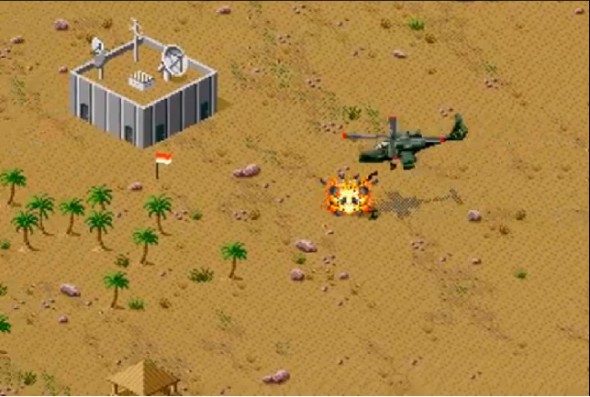 Electronic Arts debuted the Strike series in 1992 with Desert Strike, released for the Sega Genesis and Super NES. Right away players were swept away by the isometric viewpoint and vast expanse of desert in which we would do battle. Arguably an early example of a sandbox game, players would have free-run of the entire level from the start of the mission, giving you the choice of tackling your objectives in any order you wished. This required some level of critical thinking, because if you failed to knock out the enemy’s anti-aircraft systems, rescuing the hostages would be significantly more difficult. Besides that, you often were required to disrupt convoys, destroy power plants, or chase down high priority enemy officers and capture them. The difficulty level was above average from what we were used to at the time, but not ramped up enough to render the game unplayable or unenjoyable. It took many mission attempts to get things right before you could satisfactorily complete the level, with enough firepower and lives left over to have a chance at the next mission.
Electronic Arts debuted the Strike series in 1992 with Desert Strike, released for the Sega Genesis and Super NES. Right away players were swept away by the isometric viewpoint and vast expanse of desert in which we would do battle. Arguably an early example of a sandbox game, players would have free-run of the entire level from the start of the mission, giving you the choice of tackling your objectives in any order you wished. This required some level of critical thinking, because if you failed to knock out the enemy’s anti-aircraft systems, rescuing the hostages would be significantly more difficult. Besides that, you often were required to disrupt convoys, destroy power plants, or chase down high priority enemy officers and capture them. The difficulty level was above average from what we were used to at the time, but not ramped up enough to render the game unplayable or unenjoyable. It took many mission attempts to get things right before you could satisfactorily complete the level, with enough firepower and lives left over to have a chance at the next mission.
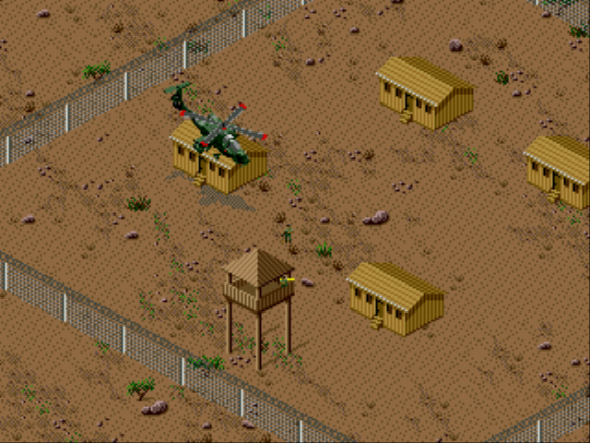 The game was stellar as far as graphics and animation were concerned. The helicopter flies over the terrain smoothly and gives a realistic impression of flight, especially with the momentum-based controls. Targeting was handled by the computer, but you still had to do a little quick math to judge distances for your cannon and rockets. You also had a winch, which was necessary to gather fuel, ammo, and armor resupplies. This could be a little tricky, especially when hovering over freed prisoners or your soon-to-be captives who tend to run away from you erratically. Overall mission difficulty was augmented by consequences for hitting civilian targets such as buildings or vehicles, however you didn’t get a game over or have to restart right away if this was the case. When I first played it, I tended to roam the level blowing up random things, just to get a feel for the best manner in which to proceed with my objectives. The only sore spot in the game was the sound. The SFX were well done and realistic, however, the lack of any in-game music did make for a somewhat tedious experience at times. All told, the first strike game was very well-executed with a perfect blend of difficulty, pacing and general attractiveness.
The game was stellar as far as graphics and animation were concerned. The helicopter flies over the terrain smoothly and gives a realistic impression of flight, especially with the momentum-based controls. Targeting was handled by the computer, but you still had to do a little quick math to judge distances for your cannon and rockets. You also had a winch, which was necessary to gather fuel, ammo, and armor resupplies. This could be a little tricky, especially when hovering over freed prisoners or your soon-to-be captives who tend to run away from you erratically. Overall mission difficulty was augmented by consequences for hitting civilian targets such as buildings or vehicles, however you didn’t get a game over or have to restart right away if this was the case. When I first played it, I tended to roam the level blowing up random things, just to get a feel for the best manner in which to proceed with my objectives. The only sore spot in the game was the sound. The SFX were well done and realistic, however, the lack of any in-game music did make for a somewhat tedious experience at times. All told, the first strike game was very well-executed with a perfect blend of difficulty, pacing and general attractiveness.
Jungle Strike (1993)
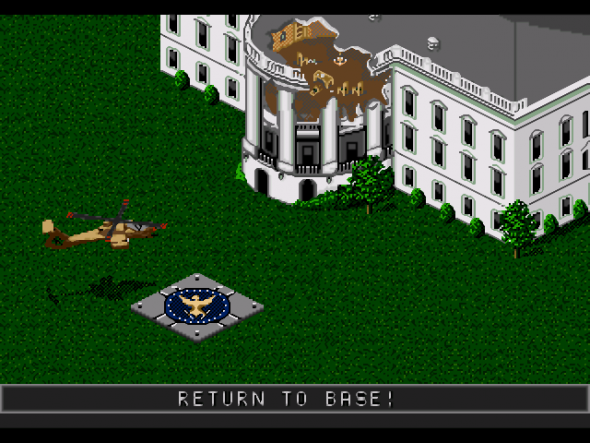 A year later saw the follow up to the original with Jungle Strike, this time released on Game Boy and Game Gear in addition to the SNES and Genesis. This time around, you are tasked with foiling a terrorist plot to destroy Washington D.C. and pursuing the culprits back into their jungle hideout. EA was not playing around, throwing you into downtown D.C. right away with a terrorist attack in progress. The core gameplay of the original was left intact, and even featured additional vehicles for you to pilot including an F-117, a hovercraft, and a motorbike, among others. The lush graphics of this release’s levels were a nice change of pace from the desert, which admittedly got bland after several hundred playthroughs. The politicism of the original was ramped down significantly, although I swear that was President Clinton I rescued at the end, especially after he apologized for cutting the defense budget!
A year later saw the follow up to the original with Jungle Strike, this time released on Game Boy and Game Gear in addition to the SNES and Genesis. This time around, you are tasked with foiling a terrorist plot to destroy Washington D.C. and pursuing the culprits back into their jungle hideout. EA was not playing around, throwing you into downtown D.C. right away with a terrorist attack in progress. The core gameplay of the original was left intact, and even featured additional vehicles for you to pilot including an F-117, a hovercraft, and a motorbike, among others. The lush graphics of this release’s levels were a nice change of pace from the desert, which admittedly got bland after several hundred playthroughs. The politicism of the original was ramped down significantly, although I swear that was President Clinton I rescued at the end, especially after he apologized for cutting the defense budget!
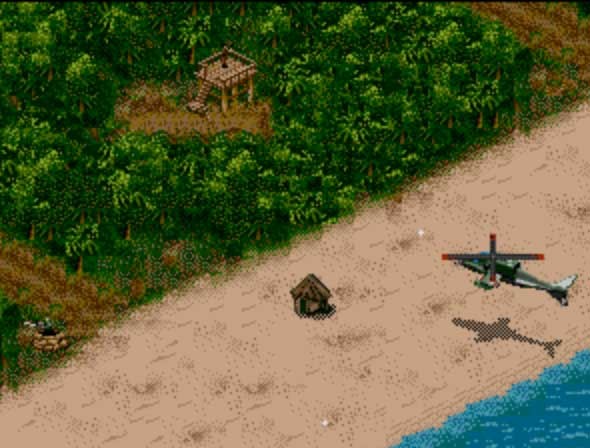 I remember first playing this game at one of the in-store demos at Blockbuster Video, and ended up renting the game so many times that I could have bought two copies with the money that I spent. The first level in Washington D.C. went a long way towards capturing your imagination, with the ability to roam the city blasting famous monuments. I dare anyone to try and tell me that blowing up the White House wasn’t the first thing you did with this game when you played it. Once you got destroying the city out of your system, you had a game that brought back everything that made the first release great, with new features that made Jungle Strike stand out on its own. The missions were in a variety of locales, and the addition of the aforementioned new vehicles offered a new experience as well. Unfortunately, the lack of music came with this game, and to be honest, the SFX sort of failed to give you the feeling that you were on an active battlefield. This can all be forgiven by an overall great game, that offers just as much replay value as the original, even today.
I remember first playing this game at one of the in-store demos at Blockbuster Video, and ended up renting the game so many times that I could have bought two copies with the money that I spent. The first level in Washington D.C. went a long way towards capturing your imagination, with the ability to roam the city blasting famous monuments. I dare anyone to try and tell me that blowing up the White House wasn’t the first thing you did with this game when you played it. Once you got destroying the city out of your system, you had a game that brought back everything that made the first release great, with new features that made Jungle Strike stand out on its own. The missions were in a variety of locales, and the addition of the aforementioned new vehicles offered a new experience as well. Unfortunately, the lack of music came with this game, and to be honest, the SFX sort of failed to give you the feeling that you were on an active battlefield. This can all be forgiven by an overall great game, that offers just as much replay value as the original, even today.
Urban Strike (1994)
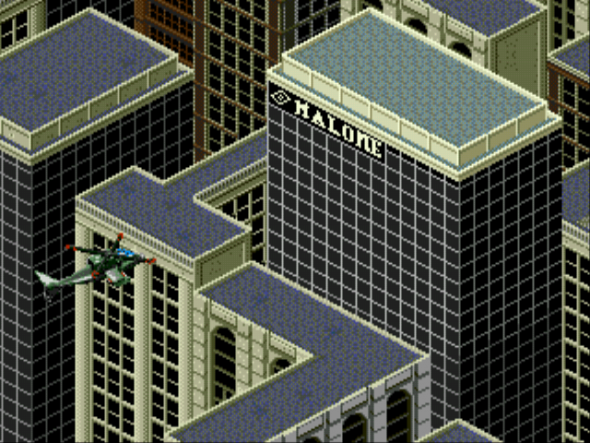 By 1994 it seemed as if the new thing every year was another Strike sequel. For reasons I’ve never understood, Genesis players got this one a year ahead of everyone else, with the SNES and other ports following the next year in 1995. Urban Strike offered players more of the same, plus an additional mode of play which put your co-pilot on foot for certain missions. This featured a zoomed-in view, with your player running and gunning through the required levels. This was something that I was not a fan of, back then or even now. The difficulty of the on-foot stages were unnecessarily high, while the rest of the game seemed easier than the first two. This caused a bit of a balance issue as far as the game was concerned. This time around, you had a couple of different helicopters to choose from, as well as an experimental Urban Assault Vehicle for later levels.
By 1994 it seemed as if the new thing every year was another Strike sequel. For reasons I’ve never understood, Genesis players got this one a year ahead of everyone else, with the SNES and other ports following the next year in 1995. Urban Strike offered players more of the same, plus an additional mode of play which put your co-pilot on foot for certain missions. This featured a zoomed-in view, with your player running and gunning through the required levels. This was something that I was not a fan of, back then or even now. The difficulty of the on-foot stages were unnecessarily high, while the rest of the game seemed easier than the first two. This caused a bit of a balance issue as far as the game was concerned. This time around, you had a couple of different helicopters to choose from, as well as an experimental Urban Assault Vehicle for later levels.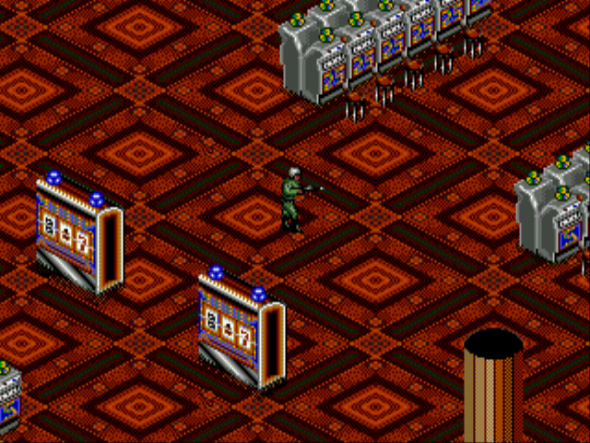 The stages themselves were by far the most cleverly designed of the series, including Hawaii, Las Vegas, San Francisco, and New York city. The designers definitely thought ‘outside of the box’ to add a new level of depth to the now-familiar isometric point of view. For example, the San Francisco stage is riddled with low clouds and fog, with the enemies and objectives having somewhat of an obscured visibility. The New York stage was also very well done, with the illusion of flying over buildings and around skyscrapers being very well executed.
The stages themselves were by far the most cleverly designed of the series, including Hawaii, Las Vegas, San Francisco, and New York city. The designers definitely thought ‘outside of the box’ to add a new level of depth to the now-familiar isometric point of view. For example, the San Francisco stage is riddled with low clouds and fog, with the enemies and objectives having somewhat of an obscured visibility. The New York stage was also very well done, with the illusion of flying over buildings and around skyscrapers being very well executed.
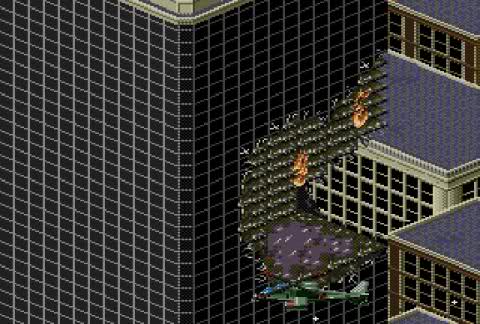 That being said, one of the more disturbing things about Urban Strike is the fact that in the New York City stage, you are tasked with rescuing survivors from the World Trade Center, and dropping them off on a nearby rooftop. This is an example of how the events of the 9/11 Attacks have changed us as a society. There was obviously no way anyone in 1994 could have predicted the events of that horrible morning, but it also illustrates how ripe of a target for terrorism the Twin Towers have been over the years preceding the attack. What is even more sobering is how close the in-game damage to the building is to how the building looked after it had been hit in real life. There is also an urban legend of a deleted level in which you had to stop a commercial airliner bound for NYC with the intention of hitting a building. In the game itself, the villain utilizes a laser weapon of some type in the fictional attack. Make no doubt about it, a 16-bit version of a burning World Trade Center is eerie, and somewhat painful even today.
That being said, one of the more disturbing things about Urban Strike is the fact that in the New York City stage, you are tasked with rescuing survivors from the World Trade Center, and dropping them off on a nearby rooftop. This is an example of how the events of the 9/11 Attacks have changed us as a society. There was obviously no way anyone in 1994 could have predicted the events of that horrible morning, but it also illustrates how ripe of a target for terrorism the Twin Towers have been over the years preceding the attack. What is even more sobering is how close the in-game damage to the building is to how the building looked after it had been hit in real life. There is also an urban legend of a deleted level in which you had to stop a commercial airliner bound for NYC with the intention of hitting a building. In the game itself, the villain utilizes a laser weapon of some type in the fictional attack. Make no doubt about it, a 16-bit version of a burning World Trade Center is eerie, and somewhat painful even today.
Soviet Strike (1996)
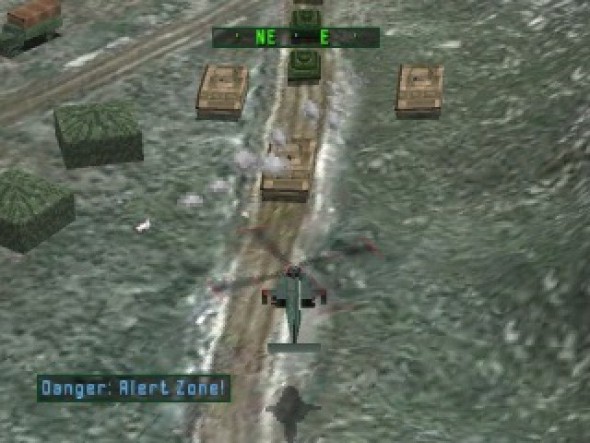 The series met the 32-bit era head on with Soviet Strike, released in 1996 for the Sega Saturn and Sony Playstation. Originally set to be a 3DO title, the game was reworked by developers when the demise of the 3DO was becoming more and more apparent. For the first time in the series, many changes were evident, as opposed to the ‘if-it-ain’t-broke-don’t-fix-it’ approach that EA took with previous sequels. In this outing, the game takes place in Russia following the fall of the Soviet Union. A shaky Russian government, (headed by an in-game Boris Yeltsin) is under siege by not only terrorists, but also the Russian Mafia, and rogue KGB elements eager to seize power. This edition was one that the Nintendo kids missed out on, with the end result of this game being unheard of to some players in this retro age in which we now live in.
The series met the 32-bit era head on with Soviet Strike, released in 1996 for the Sega Saturn and Sony Playstation. Originally set to be a 3DO title, the game was reworked by developers when the demise of the 3DO was becoming more and more apparent. For the first time in the series, many changes were evident, as opposed to the ‘if-it-ain’t-broke-don’t-fix-it’ approach that EA took with previous sequels. In this outing, the game takes place in Russia following the fall of the Soviet Union. A shaky Russian government, (headed by an in-game Boris Yeltsin) is under siege by not only terrorists, but also the Russian Mafia, and rogue KGB elements eager to seize power. This edition was one that the Nintendo kids missed out on, with the end result of this game being unheard of to some players in this retro age in which we now live in.
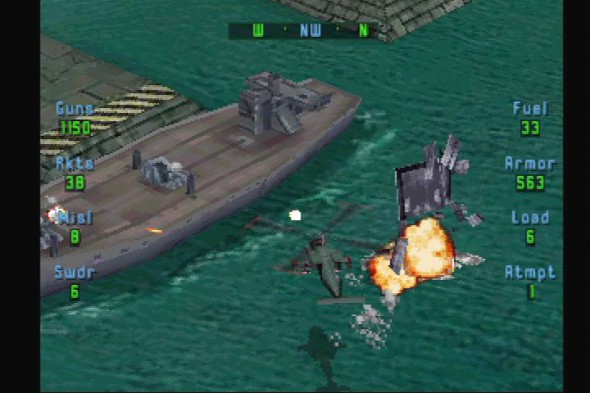 The series saw many improvements, ranging from FMV, 3D rendered terrain, an improved HUD, more realistic explosions, and polygon rendered graphics. The viewpoint was changed from isometric to a more full-3D view, allowing you to see over terrain and around buildings. The sound was superb, which was a welcome change for longtime players, with voice overs, background music (finally!), and sound effects that justified the action on screen. I remember playing this on my PSX, and reveling in the fact that it actually sounded that I was in a warzone. Stages available include the present day contested Crimea, the Black Sea, Caucasus Mountains, and Moscow itself. The stages themselves were much larger than before, which was good for content but bad when it meant starting a mission over. The non-linear gameplay was still intact, but you had to follow a certain path for completing objectives. As per usual, the controls were superb. All things considered, Soviet Strike was a very successful transition over from the 16-bit days to the 32-bit era.
The series saw many improvements, ranging from FMV, 3D rendered terrain, an improved HUD, more realistic explosions, and polygon rendered graphics. The viewpoint was changed from isometric to a more full-3D view, allowing you to see over terrain and around buildings. The sound was superb, which was a welcome change for longtime players, with voice overs, background music (finally!), and sound effects that justified the action on screen. I remember playing this on my PSX, and reveling in the fact that it actually sounded that I was in a warzone. Stages available include the present day contested Crimea, the Black Sea, Caucasus Mountains, and Moscow itself. The stages themselves were much larger than before, which was good for content but bad when it meant starting a mission over. The non-linear gameplay was still intact, but you had to follow a certain path for completing objectives. As per usual, the controls were superb. All things considered, Soviet Strike was a very successful transition over from the 16-bit days to the 32-bit era.
Nuclear Strike (1997) & Nuclear Strike 64 (1999)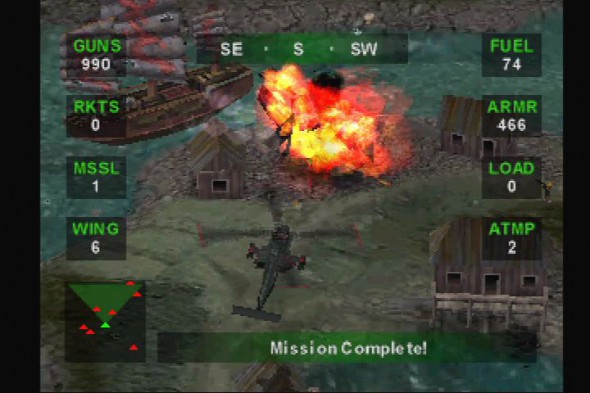 From the beginning, it is clear that EA intended to leave it all out on the floor in Nuclear Strike, the fifth and final game of the series. In this sequel, the framerate speed was increased, the AI was improved, the FMV was nearly flawless, and featured a fully-destructible environment. Also of note was the fact that in addition to your trusty chopper, you now had a grand total of 15 different vehicles at your disposal, including an M1 Abrams tank, a variety of jet fighters, and even a hovercraft. The game was however, criticized for having a weak storyline, but honestly, is a deep and engrossing story even necessary for a game like this? Anyhow, this time around, we find ourselves in a fictional Southeast Asian country, chasing militant commandos and guerrilla fighters with a stolen nuclear weapon. You also come across pirates and mobsters in your quest to destroy everything and kill everyone. The gameplay is a ramped up version of Soviet Strike, and is by far offers the richest experience of the series. The endgame finds the player in post-detonation North Korea, where you must assist US and South Korean forces in repelling an attacking North Korean army following the attack. Other improvements included an on-screen radar and a compass system to help navigate the expansive levels.
From the beginning, it is clear that EA intended to leave it all out on the floor in Nuclear Strike, the fifth and final game of the series. In this sequel, the framerate speed was increased, the AI was improved, the FMV was nearly flawless, and featured a fully-destructible environment. Also of note was the fact that in addition to your trusty chopper, you now had a grand total of 15 different vehicles at your disposal, including an M1 Abrams tank, a variety of jet fighters, and even a hovercraft. The game was however, criticized for having a weak storyline, but honestly, is a deep and engrossing story even necessary for a game like this? Anyhow, this time around, we find ourselves in a fictional Southeast Asian country, chasing militant commandos and guerrilla fighters with a stolen nuclear weapon. You also come across pirates and mobsters in your quest to destroy everything and kill everyone. The gameplay is a ramped up version of Soviet Strike, and is by far offers the richest experience of the series. The endgame finds the player in post-detonation North Korea, where you must assist US and South Korean forces in repelling an attacking North Korean army following the attack. Other improvements included an on-screen radar and a compass system to help navigate the expansive levels.
In 1999, an aging Nintendo 64 hosted the release of it’s version of the game, Nuclear Strike 64. Successful N64 powerhouse THQ, most famous for its WCW and WWF wrestling games on the system, actually developed and published the game for the system. The N64 version supports both Rumble Pack and the Expansion Pack. For a system that had a reputation for poor handling of multi-system releases, this version wasn’t that bad, actually. This isn’t to say that it didn’t have its hiccups, such as a laggy camera that had a tendency to get you shot down, and a lack of FMV, but otherwise this was a great N64 game. The music definitely took a back seat to some excellent sound effects, and at a time when load times were the bane of gamer’s existence, this was a version that featured none whatsoever. The system also handled multiple bad guys and explosions on screen with no slowdown whatsoever. With the laughable Chopper Attack and maybe one of those godawful Army Men games being the only other helicopter combat sims on the system, Nuclear Strike 64 hands-down ended up as the go-to game in its genre.
With a series that had started in such a strong manner and ended with an exclamation point, the question on my mind is why, when we think of the series as a whole, do the first two games initially come to mind? When comparing the five games, the last two obviously were the strongest in the series, yet the original and Jungle strike seem to be the most talked about. My guess is that the other side to the double edged sword of the ‘if its broke don’t fix it’ mentality is that gamers simply got used to the format and moved on to other games. Aside from new features included once the series went 32-bit, there wasn’t much difference between the games. Ultimately, it was the dedicated fans of the series that enjoyed them all from start to finish, since there wasn’t much content intended to attract new players. In the end, we are left with five solid games, while being very similar to one another, provided us with hours upon hours of death-from-above style mayhem incorporated with strategy, presented in a style that we haven’t seen since. The Strike Series is a textbook example of what made video gaming in the 1990’s great.
Get to the Choppa!- EA's Strike Series,
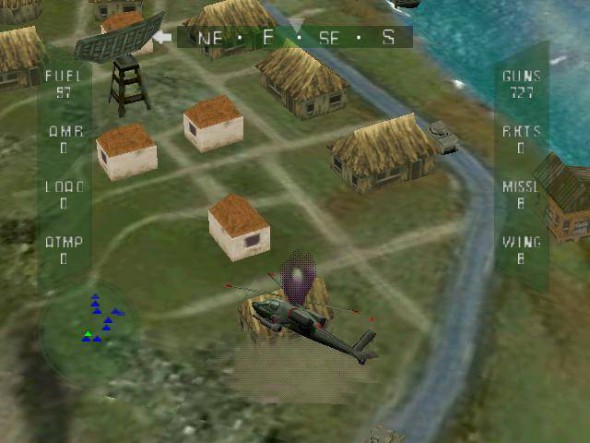



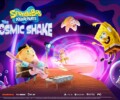
No Comments